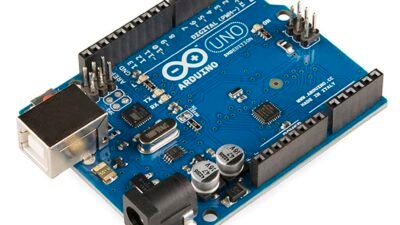In today’s competitive digital landscape, businesses rely heavily on technology to streamline communication and boost efficiency. One of the most impactful innovations in sales and customer service operations is the parallel dialer. Unlike traditional dialing systems, which operate sequentially, parallel dialers leverage advanced algorithms, automation, and cloud-based infrastructure to maximize call productivity.
This article explores the technology behind parallel dialers, how they function, and why they represent a major leap forward in communication systems.
What is a Parallel Dialer?
A parallel dialer is a calling technology that dials multiple phone numbers simultaneously, connecting an agent only when a live human answers. This eliminates wasted time spent on busy signals, voicemails, and unanswered calls.
From a technical perspective, it integrates automation, call routing, and data-driven algorithms to increase efficiency while maintaining compliance with telecom regulations.
How Parallel Dialers Work
To understand the technology behind parallel dialers, let’s break down their process:
- Automated Number Selection
- The dialer pulls phone numbers from a database or CRM system.
- Intelligent prioritization ensures that high-value leads are contacted first.
- Simultaneous Dialing
- Multiple outbound calls are placed at once.
- The dialer uses predictive algorithms to balance the number of simultaneous dials with agent availability.
- Answer Detection
- Advanced algorithms detect whether the call is answered by a human, voicemail, or machine.
- Only live human responses are connected to agents, saving time.
- Instant Call Routing
- Once a call is answered, it is routed in real-time to the next available agent.
- Routing is optimized to reduce call latency, ensuring a seamless conversation.
- Data Collection & Reporting
- Every call attempt, outcome, and duration is logged.
- Managers gain access to detailed analytics, enabling better decision-making.
Key Technologies Powering Parallel Dialers
- Cloud Infrastructure
Modern parallel dialers are hosted on the cloud, which enables scalability and global accessibility. Agents can log in from anywhere, making the system ideal for remote work and distributed teams.
- AI-Powered Algorithms
Artificial intelligence plays a central role in optimizing dialing patterns. By predicting answer rates, AI ensures that the dialer does not overwhelm agents or leave customers waiting in silence.
- Voicemail & Answering Machine Detection
Parallel dialers use speech recognition and audio frequency analysis to detect whether a human or machine has answered. This prevents wasted time and ensures agents focus only on live conversations.
- CRM Integration
Integration with customer relationship management (CRM) platforms allows the dialer to personalize outreach. Agents can see client history, preferences, and notes, making calls more meaningful.
- Compliance & Regulation Features
Since telecom regulations (like TCPA in the U.S.) restrict automated calls, parallel dialers incorporate compliance safeguards. These include:
- Call pacing controls.
- “Do Not Call” (DNC) list scrubbing.
- Consent-based dialing.
- Real-Time Analytics
The technology provides managers with live dashboards, showing call volume, agent performance, and conversion metrics. This allows for rapid adjustments and data-driven decision-making.
Technical Advantages of Parallel Dialers
- Higher Call Throughput: More calls made in less time compared to manual or sequential dialers.
- Efficient Resource Allocation: Intelligent call routing ensures no agent sits idle.
- Scalability: Cloud systems support businesses of all sizes, from small startups to global enterprises.
- Enhanced Security: Encrypted connections safeguard sensitive customer data.
- Customizable Workflows: APIs and integrations allow companies to adapt the dialer to their unique needs.
Use Cases in Modern Technology-Driven Workflows
- Sales Teams
- Parallel dialers increase outbound sales efficiency by connecting agents directly with live prospects.
- Customer Support
- Businesses handling high-volume support callbacks use dialers to quickly reach customers.
- Healthcare
- Clinics and hospitals use parallel dialers for appointment reminders, follow-ups, and patient communication.
- Finance & Real Estate
- Industries where timely communication is crucial benefit from parallel dialers to stay ahead of competitors.
The Future of Parallel Dialer Technology
As communication technology continues to evolve, parallel dialers are expected to become even more advanced. Upcoming trends include:
- Deeper AI Integration: Smarter predictive dialing, sentiment analysis, and customer intent recognition.
- Omnichannel Communication: Integration with SMS, email, and chat for a unified outreach strategy.
- 5G-Powered Connectivity: Faster call connections and reduced latency for smoother customer experiences.
- Automation & Self-Learning Systems: Dialers that continuously improve call strategies based on historical performance.
Final Thoughts
The parallel dialer is more than just a productivity tool—it represents a fusion of cloud computing, AI, and communication technology. By automating repetitive tasks and enabling smarter workflows, it allows organizations to achieve higher efficiency while empowering agents to focus on meaningful conversations.
In an age where speed, personalization, and data-driven strategies define success, the parallel dialer stands out as one of the most impactful technologies reshaping communication.



